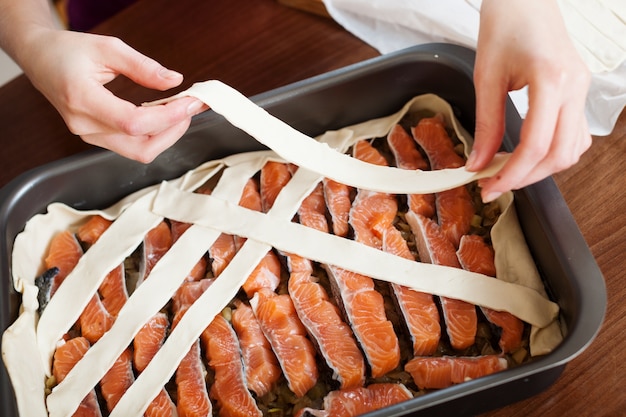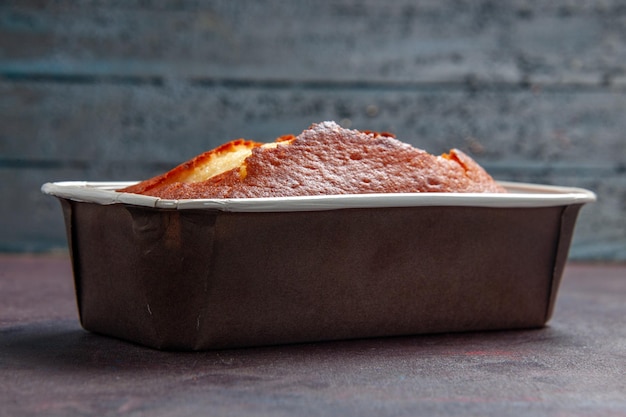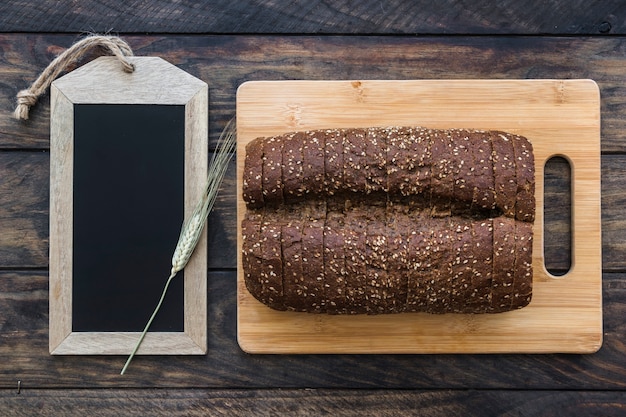Ah, meatloaf. Just the word conjures up warm memories of cozy evenings, hearty family meals, and those irresistible aromas that fill the house with a sense of pure comfort. But for all its simplicity, there’s one question that often sends even seasoned cooks scrambling for their recipe books: how long do you cook it for? Well, fret no more, my fellow foodies! As a seasoned chef with years of experience under my belt (and a few meatloaf mishaps along the way!), I’m here to guide you through the art of crafting the perfect meatloaf, from the initial mix to the final slice, with a special focus on nailing that crucial cooking time.
(Part 1) The Foundations of a Great Meatloaf: Ingredients and Preparation

Listen, folks, when it comes to meatloaf, I’m a firm believer in starting with the best ingredients you can find. It’s like building a house – if your foundation isn’t solid, the whole thing can crumble. Now, this doesn’t mean you need to spend a fortune. Just a little bit of careful selection goes a long way. And remember, preparation is key! It's those little steps that make all the difference in the final result.
Choosing the Right Ground Meat: A Matter of Taste
The world of ground meat can be a bit overwhelming, I know. You’ve got your beef, your pork, your blends – it’s enough to make your head spin! But trust me, the key is to choose a meat that you actually enjoy. If you prefer a rich, beefy flavor, go for all-beef. If you like a bit of pork’s subtle sweetness, opt for a blend. Personally, I’m a fan of a mix of 80% lean beef and 20% ground pork. It strikes a beautiful balance of richness and tenderness, creating a meatloaf that’s both flavorful and juicy.
The Meatloaf Mix: Unleashing Your Culinary Creativity
Alright, now we’re getting to the heart of it – the meatloaf mix! This is where you get to experiment and really personalize your dish. There are no hard and fast rules, but I’ve found that a few key ingredients are essential for a truly delicious meatloaf.
- Breadcrumbs: The backbone of any great meatloaf. They add that essential moisture and texture, preventing it from being dry and crumbly. I usually use fresh breadcrumbs, but don’t be afraid to get adventurous with panko or seasoned breadcrumbs – they add a lovely crunch.
- Eggs: The binding agent, holding everything together like a culinary glue. They add structure, ensuring your meatloaf doesn't fall apart during cooking.
- Milk or Broth: The secret weapon for juiciness! The liquid helps the breadcrumbs soak up the moisture, making for a tender and flavorful meatloaf.
- Onions: A touch of sweetness and savory goodness. I like to sauté them gently before adding them to the mix – it softens them up and adds a hint of caramelisation, giving the meatloaf a richer flavor.
- Garlic: A punch of flavor that no meatloaf can resist! I use fresh garlic, either minced or finely chopped, for that unmistakable aroma and zest.
- Seasoning: Now we’re talking! Salt and pepper are essential, but don’t be afraid to experiment with other spices. I often add a pinch of paprika, cayenne pepper, or even a teaspoon of chili powder for a little kick.
- Herbs: Freshness and fragrance in every bite! I love using parsley, oregano, and thyme, often combining them for a more complex flavor.
- The Extra Mile: This is where you can really unleash your inner chef! You can add chopped vegetables like bell peppers, mushrooms, or carrots, or even some shredded cheese or bacon for extra indulgence.
Shaping and Glazing: The Finishing Touches
Once you’ve got your meatloaf mix ready, it’s time to give it a shape. I usually opt for a classic loaf shape, but feel free to get creative with a round or even a crown shape. Just remember, it needs to be firmly packed and smooth for a beautiful presentation.
And finally, let’s talk about the glaze! It’s the finishing touch that elevates your meatloaf from ordinary to extraordinary. I usually go with a simple mix of ketchup, brown sugar, and Worcestershire sauce – it adds a lovely shine and a sweet-savory flavor that’s hard to resist.
(Part 2) Mastering the meatloaf cooking Time: Crucial Factors

Alright, here’s the moment we’ve all been waiting for – the cooking time! But before I reveal my secrets, let me tell you this: there’s no magic number. The perfect cooking time depends on a few key factors. Let’s break them down.
1. Size Matters: The Dimensions of Your Meatloaf
A smaller meatloaf will cook much faster than a larger one. Think of it as baking a cake – a mini cake will be done before a giant one. I usually make a meatloaf that fits snugly in a loaf pan, but if you’re feeling adventurous, you can certainly experiment with different sizes.
2. Shape Shifters: Round or Loaf?
The shape of your meatloaf also plays a role in cooking time. A round meatloaf cooks more evenly, as heat can reach all sides equally. However, if you’re using a loaf pan, make sure it’s big enough to accommodate your meatloaf without it overflowing.
3. Oven Temperature: Finding the Sweet Spot
Oven temperature is another crucial factor. I prefer to bake my meatloaf at a moderate temperature of 350°F (175°C). This ensures even cooking and prevents it from drying out. If you crank up the heat too high, you risk burning the outside before the inside is cooked through.
(Part 3) The meatloaf cooking time Guide: Your Cheat Sheet for Success

Let's get practical, shall we? Here’s a general guideline for cooking times, based on the size of your meatloaf. Remember, these are just starting points – always check for doneness with a meat thermometer, which is an absolute must for any meat-loving cook.
| meatloaf size | Cooking Time |
|---|---|
| Small (1.5 pounds) | 60-75 minutes |
| Medium (2-2.5 pounds) | 75-90 minutes |
| Large (3 pounds or more) | 90-120 minutes |
Now, a little reminder about the importance of that meat thermometer! It’s a small investment that can save you from a lot of frustration (and potential food poisoning). Insert the thermometer into the thickest part of the meatloaf, making sure it doesn't touch the bottom of the pan. The internal temperature should reach 160°F (71°C) – that’s the magic number for a safe and delicious meatloaf.
(Part 4) The Art of Doneness: Checking for a Perfectly cooked meatloaf
Knowing when your meatloaf is ready is crucial to achieving that perfect balance of texture and flavor. Here are a few tips to help you gauge doneness.
The Meat Thermometer: Your Culinary Compass
I can’t stress this enough – a meat thermometer is your best friend when it comes to meatloaf! It takes all the guesswork out of cooking, ensuring that your meatloaf is cooked through and safe to eat.
Visual Cues: Signs of a Well-Cooked Meatloaf
While a meat thermometer is the gold standard, there are some visual cues to look for.
- Firmness: A cooked meatloaf should be firm to the touch. It shouldn't wobble or jiggle when you press on it lightly.
- Clear Juices: When you pierce the meatloaf with a fork, the juices should run clear, not pink or red. This indicates that the meat is cooked through.
- Appearance: The meatloaf should be evenly browned on the top and sides, with a slightly crusty exterior.
(Part 5) The Resting Ritual: A Crucial Step in the Meatloaf Journey
Don’t be tempted to dive in right away! Once your meatloaf is out of the oven, let it rest for at least 10 minutes before slicing and serving. This allows the juices to redistribute throughout the meatloaf, resulting in a juicier and more flavorful dish. It’s like letting a good steak rest before cutting into it – a little patience goes a long way.
(Part 6) The Meatloaf Symphony: Serving Suggestions for Every Palate
Now that your masterpiece is cooked to perfection, it’s time to think about how you’ll present it to the world. The beauty of meatloaf is its versatility – it pairs well with a variety of side dishes, allowing you to create a culinary symphony to suit every taste.
Classic Comfort: mashed potatoes and Gravy
For a timeless and comforting meal, serve your meatloaf with a generous portion of creamy mashed potatoes and a rich, flavorful gravy. It’s a classic combination that will never go out of style, reminding you of warm family dinners and cozy evenings.
green beans: A Touch of Freshness and Lightness
Add a pop of color and freshness with a side of steamed or roasted green beans. They offer a nice contrast to the richness of the meatloaf and provide a healthy dose of vitamins.
Salad: Balancing the Flavors
A simple salad with a light vinaigrette helps to balance the flavors and add a refreshing touch to your meal.
Beyond the Basics: Embracing Culinary Creativity
Don’t be afraid to think outside the box! Roasted vegetables, a side of pasta, or a creamy risotto can all complement the flavors of your meatloaf.
(Part 7) Beyond the Basic: Exploring meatloaf variations
Once you've mastered the classic meatloaf, it’s time to experiment with different flavors and techniques. The world of meatloaf is your oyster, with endless possibilities for creativity.
Spicy Meatloaf: A Touch of Heat
For those who like a little kick, add some chili powder, cayenne pepper, or a dash of hot sauce to your meatloaf mix. You can also try adding chopped jalapenos or habaneros for an extra fiery punch.
Mediterranean Meatloaf: Flavors of the Sun
Embrace the Mediterranean with a meatloaf infused with herbs like oregano, thyme, and rosemary. Add some chopped sun-dried tomatoes, olives, and crumbled feta cheese for an authentic and flavorful experience.
Cheesy Meatloaf: A Gooey Delight
For a decadent and cheesy treat, add shredded cheddar, mozzarella, or a combination of both to your meatloaf mix. It’s sure to be a hit with the cheese lovers in your family.
Bacon-Wrapped Meatloaf: Indulgent Perfection
For the ultimate meatloaf indulgence, wrap your masterpiece in strips of crispy bacon before baking. The bacon adds a smoky flavor and a crispy texture that’s irresistible.
(Part 8) Navigating Meatloaf Mishaps: Troubleshooting Tips
Even the most experienced cooks can encounter a meatloaf mishap or two. It happens to the best of us! But don’t despair – I’m here to guide you through the common pitfalls and offer solutions.
Meatloaf Too Dry?
If your meatloaf turns out too dry, it’s likely you didn't add enough moisture to the mix. Next time, add a little more milk or broth. You can also try adding a few tablespoons of finely chopped vegetables, which release moisture as they cook.
Meatloaf Falling Apart?
If your meatloaf falls apart, it might be because the mixture wasn’t packed tightly enough. Ensure that you pack it firmly into the pan and shape it evenly. You can also add a little more egg to the mix for extra binding power.
Meatloaf Not Cooked Through?
If your meatloaf isn’t cooked through, it’s likely you didn’t cook it long enough. Check the internal temperature using your trusty meat thermometer. If it's still below 160°F (71°C), pop it back in the oven for a few more minutes until it reaches the desired temperature.
FAQs: Unveiling the Secrets of Meatloaf
Here are some common questions about meatloaf and their detailed answers:
1. Can I Freeze Meatloaf?
Absolutely! Once your meatloaf has cooled down completely, wrap it tightly in plastic wrap and then in aluminum foil. It can be stored in the freezer for up to 3 months. To reheat, thaw it in the refrigerator overnight and then bake it in a preheated oven at 350°F (175°C) until heated through.
2. What Can I Serve with Meatloaf?
Meatloaf is incredibly versatile! Classic pairings include mashed potatoes, gravy, green beans, and a simple salad. But you can also get creative and serve it with roasted vegetables, a side of pasta, or a creamy risotto.
3. What Happens If I Don't Have Breadcrumbs?
No worries! You can use other binding agents like crushed crackers, oats, or even cooked rice. Just make sure to adjust the amount depending on the type of binder you use.
4. How Do I Make My Meatloaf Juicy?
To ensure a juicy meatloaf, make sure to add plenty of moisture to your mix. Use milk or broth and don’t be afraid to add a little extra. You can also add some finely chopped vegetables like onions and peppers, which release moisture as they cook.
5. How Do I Make My Meatloaf Flavorful?
A flavorful meatloaf starts with good quality ingredients and a well-balanced mix of seasonings. Use a combination of fresh and dried herbs and don’t be afraid to add a little spice. You can also try adding a touch of Worcestershire sauce or other flavor enhancers to your mix. Remember, it’s all about finding the perfect balance of flavors to suit your taste buds!
Everyone is watching

Corn on the Cob: The Ultimate Guide to Perfectly Cooked Ears
Healthy MealsAh, corn on the cob. Just the name evokes images of sunny days, barbecues, and that sweet, juicy flavour that ...

Perfect Pork Roast Oven Cooking Time: A Guide to Delicious Results
Healthy MealsThere's something truly satisfying about a perfectly roasted pork. The aroma alone is enough to make your mout...

Ham Cooking Time: How Long to Bake, Smoke, or Boil a Delicious Ham
Healthy MealsAh, ham. It's a classic, isn't it? A real crowd-pleaser, especially around holidays. And when done right, it'...

Scallops: The Ultimate Guide to Perfect Cooking
Healthy MealsAh, scallops. Those delicate, sweet, and utterly delicious morsels of the sea. They hold a special place in my...

Spaghetti Squash: The Ultimate Guide to Cooking and Serving
Healthy MealsRemember that time you saw spaghetti squash at the supermarket, looking all bumpy and strange, and thought, "W...
